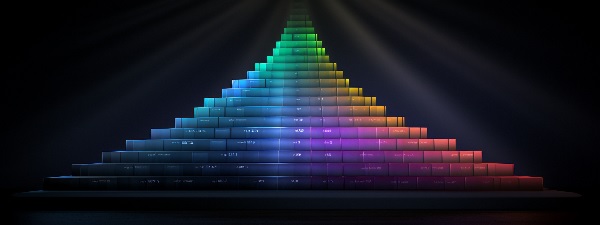In today’s digitized world, visual data representation allows us a more efficient breakdown of complex information. One such representation is the stacked chart. But what exactly is a stacked chart? Keep reading to explore this interactive way of data depiction.
Contents
Understanding the Basics of Stacked Charts

A stacked chart is a graphic representation of multiple data series that stack on top of each other in a single column, bar, or line. This chart type is particularly useful when comparing the proportions within a whole.
The beauty of a stacked chart is in its simplicity and its ability to load a lot of information in a clear and concise way. It highlights the total value across different categories, displaying both the total and individual breakdown.
A common use of a stacked chart is in financial or business data analysis, tracking the growth, decline, or changes in data over time.
The user’s understanding of the stacked chart begins with a firm grasp of its basic principles. These principles lay the groundwork for how these charts are constructed and interpreted.
The Principle Behind Stacked Charts
A stacked chart operates on a simple principle: it aggregates the data series in a way that makes it easy to compare total size across categories. Each segment in the column, bar, or line represents a different category, and the whole column, bar, or line represents the total.
To illustrate this, imagine a pizza divided into slices, each slice representing a different topping. The whole pizza (column, bar, or line) represents the total amount, while each slice (segment) represents a different topping (category).
This principle allows for an easy and intuitive comparison of categories within a whole, providing a visual representation of the ratio between categories and their contribution to the total sum.
The aim is to convey information efficiently without overwhelming the viewer with complex data. In essence, the principle of a stacked chart revolves around the clarity and simplicity of data presentation.
Different Types of Stacked Charts

Stacked charts come in many varieties to cater to different needs. We have the most common types, such as the basic stacked column or bar charts, the stacked line charts, and the stacked area charts. Each chart type is suitable for a particular kind of data and adds a unique dimension to data representation.
The stacked column or bar chart, for instance, is excellent for comparing totals and spotting trends. By stacking the columns or bars, it shows how the composition of data changes over time, while still showcasing the cumulative total.
Stacked line charts, on the other hand, highlight the change in distribution over time and are best for time series data. Stacked area charts, conversely, illustrate how individual categories contribute to the total over time, showing the relation of parts to a whole.
Choosing the type of stacked chart to use is largely dependent on the data at hand and the desired presentation. The important thing is to ensure that the chart effectively communicates the intended message to the audience.
Incorporating Stacked Charts in Data Presentation
Having a successful data presentation goes beyond just having accurate data; it also encompasses the proper use of visual aids like stacked charts. A stacked chart can help in understanding complex data by showcasing it in a simple, easy-to-digest format.
To incorporate a stacked chart in your presentation, consider the type of data you’re dealing with and how it’s best represented. If you’re dealing with data that shows the distribution of categories over time, a stacked line or area chart could be a great choice.
Also, consider the audience’s familiarity with stacked charts. Though generally straightforward, not everyone may be familiar with reading these charts. A brief explanation about how to interpret the chart might be helpful.
Altogether, stacked charts are a powerful tool for data visualization, capable of presenting complex data sets in an easy-to-understand format. Their effective use, however, hinges on understanding their underlying principles, knowing when to use them, and being aware of their strengths and weaknesses.
